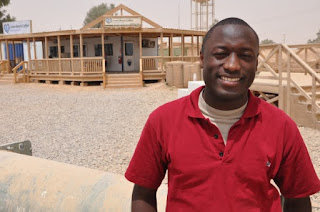In 1979 I lived in the military housing area in the Wiesbaden Military Community. One day, a Jehovah's Witness came to my door. Back then, military housing was open and Germans came into the housing area for many reasons. The top reason was dumpster diving. The Germans thought (they were right) Americans threw away perfectly good stuff!
And then there was Martin. He was an earnest, committed Jehovah's Witness. He spoke four languages and wanted to convert Americans to his faith. Martin was in his late 20s, tall, thin and very serious. He had thinning hair which he wore short, but not military buzz cut short. He looked straight into your eyes with his ice blue eyes and radiated sincerity.
When Martin came to my door, he started with his practiced presentation then went off script when he found I had actually read the Bible through in two translations. He was even more delighted when he found out I was taking a correspondence course in New Testament Greek. Martin was studying Greek. After 90 minutes of talking about how best to parse irregular Greek verbs Martin said he had to go, but said he would be back the next week. We set a time to meet and he was off to tell the rest of the housing area about his faith.
Martin came back the next week and every week I was in town for several months until I went home at the end of my enlistment. Martin was getting married the month after my discharge. He invited me to the wedding. I was sad that I could not attend. We continued to disagree about matters of doctrine until the last time we met, but at the same time thought that there was no way to be serious about reading the Bible and read it in translation.
At the same time I was studying Greek with Martin, I was visiting my friend Cliff every week in Darmstadt where he was a novice in the Franciscan Brotherhood at Canaan. Cliff left the American military on May 2 of 1979 and started on the road to becoming Bruder Timotheus, which he is now at Canaan.
While I was in the Cold War Army, I met many people who were serious about their faith. When I re-enlisted in 2007, I expected to find the same kind of people, but the world and the Army had changed a lot between the 70s and the Iraq War. The "Whatever" culture affects everything. In the 1970s, there was a guy in our unit who could have been "Bible" from the movie "Fury." I never met that guy in Iraq.


























